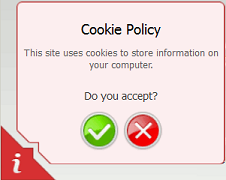This section describes how to do the following:
Website name is a line of text that is shown in the title bar of a user's browser when they visit your website. By default, it is "My website", but you can change it to anything you want.
Website description is shown by search engines when your website is listed in search results. Website keywords are analyzed by search engines and are used for displaying your website when people search for these keywords.
You can specify the site description and keywords that the editor will use for all pages of your website (in Settings tab > Basic), and specify custom values for specific pages (in Pages tab > page name > Edit page description and keywords).
To edit your website name, description, and keywords:
The description and keywords will be used by default for new and existing pages.
The contact information and company name that you specified in the first step of creating your site are shown in the relevant places and elements of the site, such as About Us, Contact Us pages, and in Map modules. You can change this information in all respective locations at once (by editing the values in the Settings tab > Owner Info), or you can manually overwrite each value by editing text on the pages.
A favicon is a small icon displayed in the browser’s address bar when you visit a website, and also appears next to the website name in the list of favorite bookmarks. You can create a favicon using a variety of online tools and then upload your favicon through the Presence Builder editor. All your website visitors will see this favicon.
To upload a favicon for your website:
To remove a favicon from your website:
Most search engines require you to verify website ownership when you register your website or sign up for webmaster assistance services. Verification is typically done by uploading or creating a file with a specific file name.
To verify website ownership:
To edit the HTML <head> section of your website (for example, to add ownership verification meta code):
Note: Only valid HTML tags permitted for <head> section by HTML standards are supported. Metadata changes will be available only after you publish your website.
An analytics service is a tool that allows you to obtain information about your visitors. After you register with an analytics service, such as Google Analytics, and acquire the required code, you can embed the analytics service on your website.
To embed an analytics service:
Note: The analytics service will start working only after you publish your website.
Some search engines will ask you to provide your sitemap for analysis and optimization purposes. You can download your sitemap from the Presence Builder editor.
To download your website sitemap:
sitemap.xml file.To prevent search engines from indexing certain pages of your website, you can add the appropriate directives into the robots.txt file. This file is stored on the customer account to which your site is published.
To prevent search engines from indexing certain areas of your website:
For example, to prevent all search engine robots and crawlers from indexing the contents of the directory /private and the file /my_secret.html on your customer account, add the following lines:
User-agent: *
Disallow: /private/
Disallow: /my_secret.html
For more information about the robots.txt file and directives you can use, refer to http://www.robotstxt.org/robotstxt.html.
If you are located in the European Union, your site must inform its visitors about the use of non-essential cookies and obtain informed consent.
Cookies are small files that web servers save on visitors' computers. Cookies may be used for a number of purposes, from remembering personal preferences to tracking users' behavior for presenting targeted advertisements. Non-essential cookies are those that are not required for websites to function properly. Examples of non-essential cookies include those from analytics, advertising, and affiliate networks such as Google Analytics and Google AdSense.
Most likely, your site uses non-essential cookies if it uses the following functions:
If you choose to show a notice on the site, its visitors will be prompted to confirm that they accept your policy.

If they accept it, the notice is no longer shown (the icon ![]() is shown instead in the page corner), and they can continue browsing your site. If they do not accept it, they are taken to google.com.
is shown instead in the page corner), and they can continue browsing your site. If they do not accept it, they are taken to google.com.
To show a cookie notice on the site: